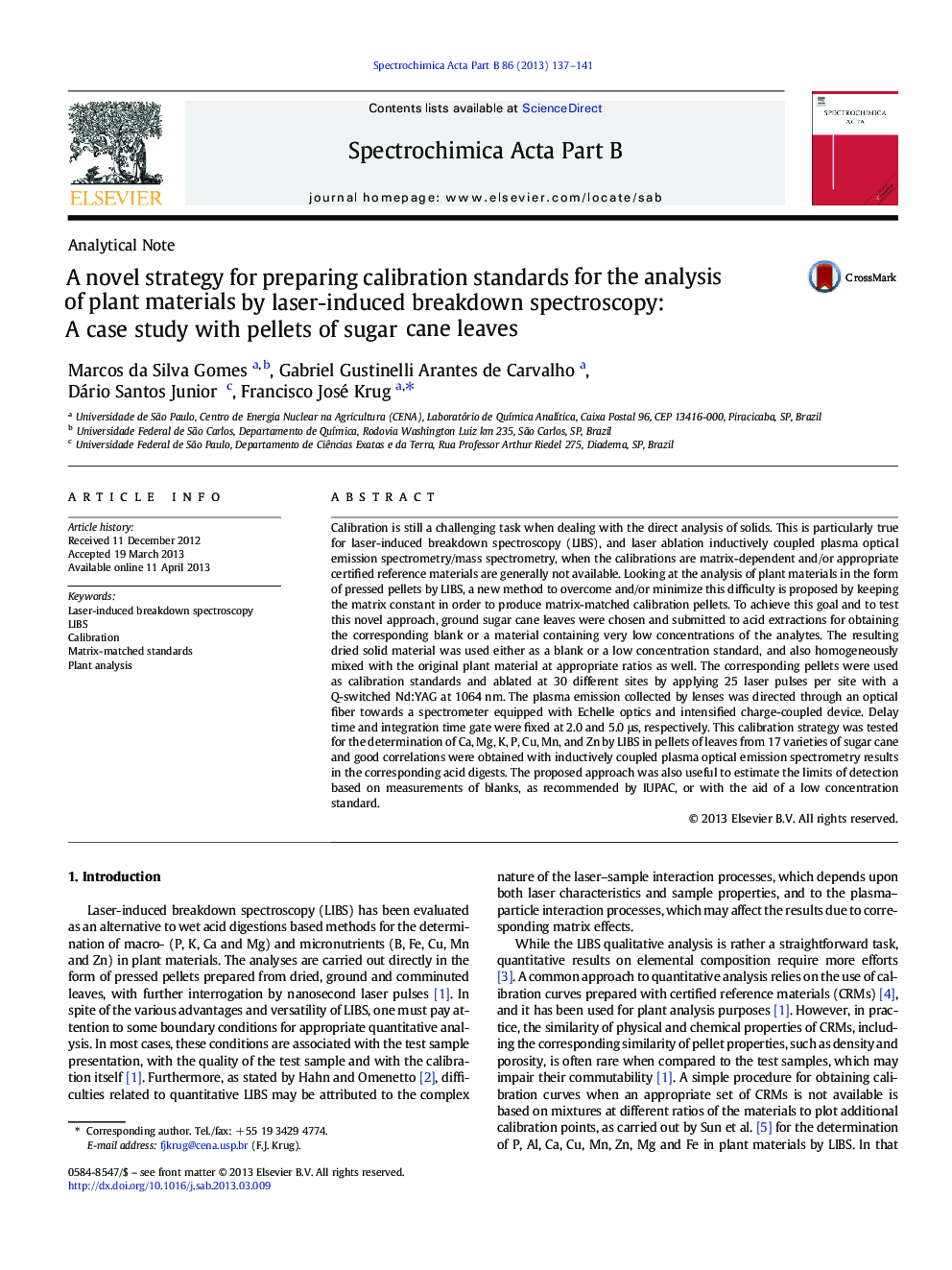| Article ID | Journal | Published Year | Pages | File Type |
|---|---|---|---|---|
| 1239860 | Spectrochimica Acta Part B: Atomic Spectroscopy | 2013 | 5 Pages |
•Blanks and/or low concentration standards of plant materials were produced for LIBS analysis.•Matrix matching calibration standards were prepared from laboratory plant samples.•The strategy extends the range of the calibration curves towards lower concentrations.
Calibration is still a challenging task when dealing with the direct analysis of solids. This is particularly true for laser-induced breakdown spectroscopy (LIBS), and laser ablation inductively coupled plasma optical emission spectrometry/mass spectrometry, when the calibrations are matrix-dependent and/or appropriate certified reference materials are generally not available. Looking at the analysis of plant materials in the form of pressed pellets by LIBS, a new method to overcome and/or minimize this difficulty is proposed by keeping the matrix constant in order to produce matrix-matched calibration pellets. To achieve this goal and to test this novel approach, ground sugar cane leaves were chosen and submitted to acid extractions for obtaining the corresponding blank or a material containing very low concentrations of the analytes. The resulting dried solid material was used either as a blank or a low concentration standard, and also homogeneously mixed with the original plant material at appropriate ratios as well. The corresponding pellets were used as calibration standards and ablated at 30 different sites by applying 25 laser pulses per site with a Q-switched Nd:YAG at 1064 nm. The plasma emission collected by lenses was directed through an optical fiber towards a spectrometer equipped with Echelle optics and intensified charge-coupled device. Delay time and integration time gate were fixed at 2.0 and 5.0 μs, respectively. This calibration strategy was tested for the determination of Ca, Mg, K, P, Cu, Mn, and Zn by LIBS in pellets of leaves from 17 varieties of sugar cane and good correlations were obtained with inductively coupled plasma optical emission spectrometry results in the corresponding acid digests. The proposed approach was also useful to estimate the limits of detection based on measurements of blanks, as recommended by IUPAC, or with the aid of a low concentration standard.
